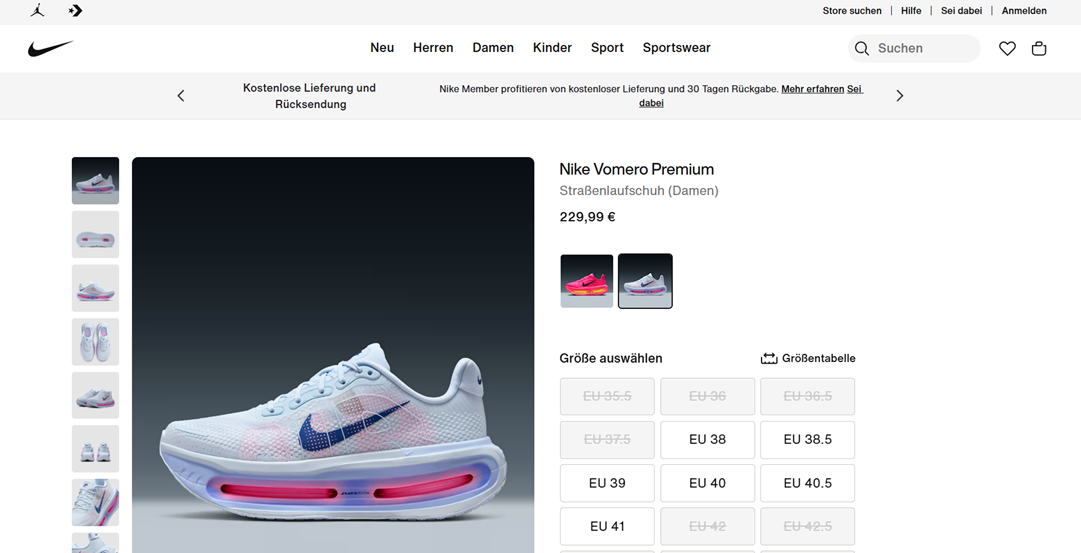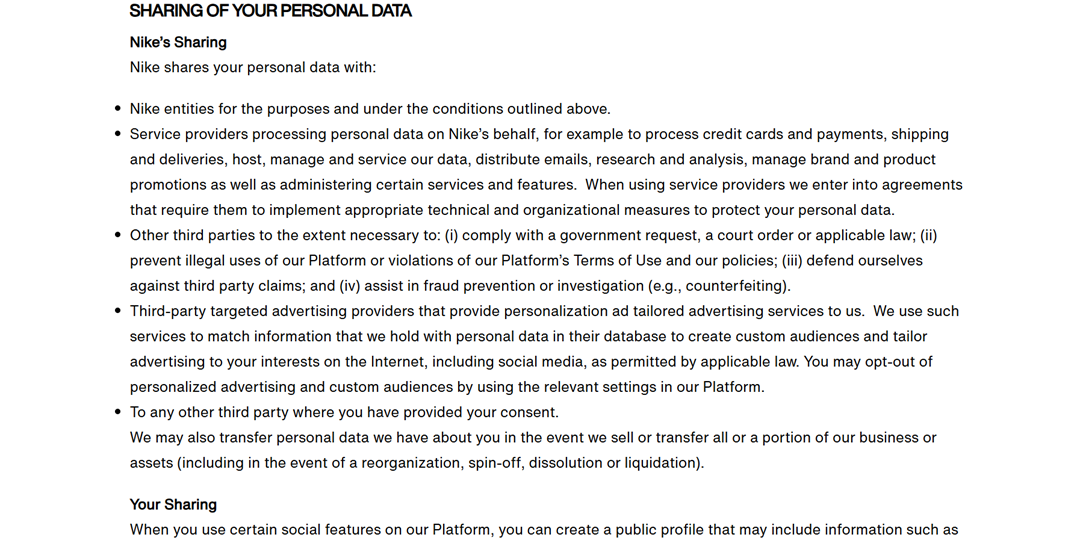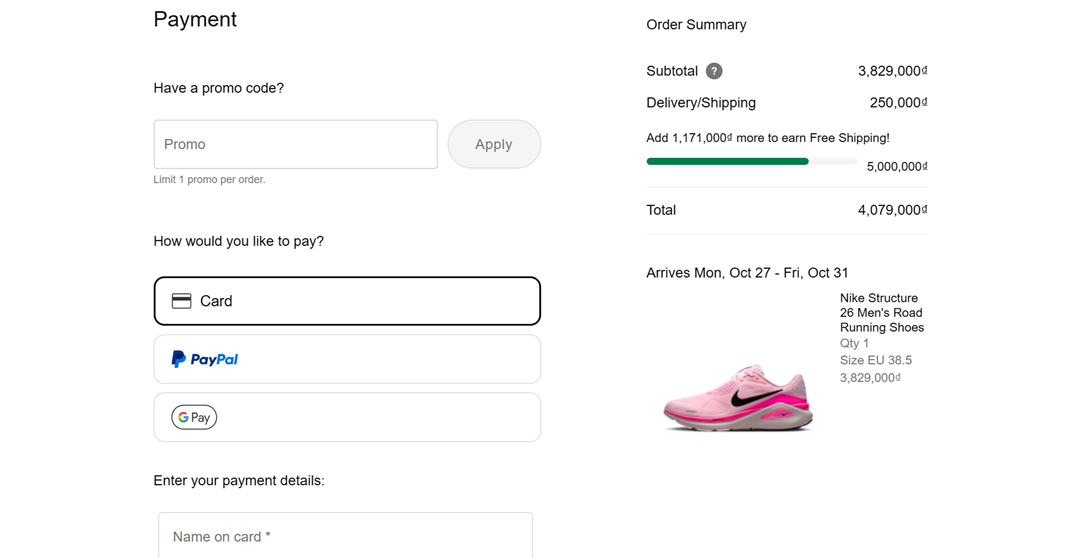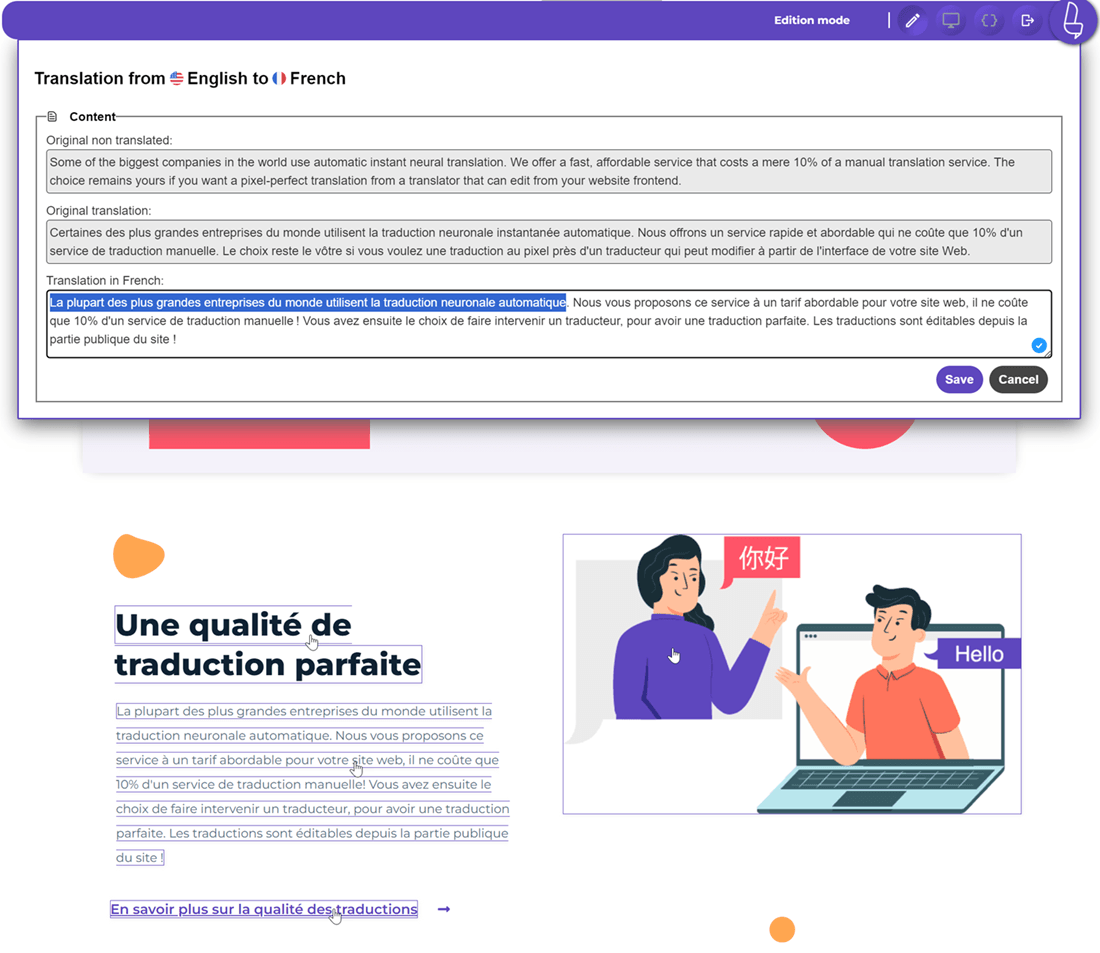Global e-commerce success depends on how well brands optimize their multilingual conversion strategies. While reaching international audiences is easier than ever, turning visitors into paying customers requires more than translating your website. Shoppers in different regions have distinct expectations, what feels intuitive or trustworthy to one culture may seem confusing or suspicious to another.
A well-optimized multilingual e-commerce strategy bridges linguistic gaps and creates a culturally familiar and secure shopping experience. By combining localized user experience (UX) design with region-specific payment strategies, businesses can build trust, improve satisfaction, and boost conversions across markets.
Why multilingual optimization matters in e-Commerce?

Multilingual optimization ensures that your content, design, and checkout process feel natural and trustworthy to every audience you serve. It bridges the gap between global reach and local relevance, helping businesses connect authentically with international shoppers.
Here’s why multilingual optimization plays such a vital role in e-commerce success.
- Enhances customer trust and connection: When customers can browse and shop in their native language, they feel more comfortable and confident. This familiarity builds trust, reduces hesitation, and encourages them to complete a purchase.
- Improves UX across cultures: Localizing not just text but also visuals, layout, and navigation ensures users feel that the site was designed for them. This improves satisfaction and lowers bounce rates.
- Boosts global conversion rates: A fully localized website can significantly increase conversion rates by removing language barriers and addressing cultural expectations that influence buying behavior.
- Strengthens SEO and market visibility: Search engines prioritize localized content. Optimizing your site in multiple languages improves organic reach in local markets and helps you compete more effectively against native competitors.
- Builds long-term brand loyalty: When customers feel understood and valued through personalized experiences in their language, they’re more likely to return and recommend your brand to others.
Challenges of e-Commerce conversion

Expanding into global markets opens exciting opportunities, but it also comes with complex challenges that can directly impact conversion rates. Understanding these barriers is essential to building a seamless, trustworthy, and culturally relevant shopping experience.
Language and cultural gaps
Language barriers remain one of the biggest obstacles to e-commerce conversion. Even when a site offers translations, literal word-for-word translation often misses cultural tone, idioms, or buying cues specific to each market. For instance, phrases that sound persuasive in English might come across as too direct or impolite in another language. This mismatch can lead to confusion or even distrust among customers.
Cultural context is just as important as language accuracy. Every culture has its own shopping habits, color preferences, and emotional triggers. A marketing campaign that works well in the U.S. might feel irrelevant in Japan or Brazil. Bridging these gaps means understanding local values and adapting both content and design to resonate emotionally with each audience.
Unlocalized UX
A common mistake in global e-commerce is assuming that one universal design fits all. User experience (UX) varies greatly between cultures, everything from layout structure to image style can influence how comfortable users feel navigating your site. A cluttered interface may work in some Asian markets where dense information is normal, but it might overwhelm users in Western countries who prefer simplicity.
Localization goes beyond translation, it’s about tailoring the entire journey. This means adapting visuals, currencies, measurement units, and even checkout flows to match user expectations in each region. A well-localized UX improves usability and signals respect for cultural differences, making users more likely to trust your brand and complete their purchases.
Cross-border payment barriers

Even when shoppers find the right product, many abandon their carts because their preferred payment methods aren’t available. Payment preferences differ widely around the world, credit cards dominate in the U.S., digital wallets in China, and bank transfers in parts of Europe. Ignoring these preferences can instantly break a potential sale.
Currency conversion, international fees, and hidden costs also discourage global buyers. Offering localized payment gateways and clear currency displays can make checkout smoother and more transparent. When shoppers see familiar payment options and local currencies, they’re more confident that the store understands their needs and is trustworthy.
Trust and security concerns
Trust is the foundation of any online purchase, and it’s even more critical in cross-border transactions. Customers often hesitate to buy from unfamiliar foreign sites, especially if the website looks outdated, the payment process feels insecure, or privacy terms aren’t clearly explained.
To build credibility, brands must demonstrate reliability through localized trust signals, such as security badges, verified payment gateways, and regionally recognized customer service. Transparent communication about shipping, refunds, and data protection policies can reassure customers that their information and money are safe.
Technical and operational barriers

Behind every smooth online purchase is a robust technical system—and this can be a major challenge when scaling globally. Issues like slow loading times, unstable connections, and incompatible plugins can frustrate users and cause them to leave before completing a purchase.
Operationally, managing inventory, logistics, and support across multiple regions requires strong infrastructure. Each country may have different tax rules, shipping regulations, or customer expectations. Investing in scalable platforms and automation tools can help overcome these challenges, ensuring your e-commerce operations stay consistent and reliable worldwide.
Optimizing payment strategies for global customers

When selling globally, payment is a crucial part of the customer journey. Even great products lose sales if shoppers can’t pay easily or securely. By adapting to local payment habits, ensuring transparency, and simplifying checkout, businesses can create a smooth, reliable buying experience for every customer.
Regional payment preferences
Each region has its own preferred payment methods, shaped by culture, infrastructure, and trust in financial systems. In the U.S. and Europe, credit cards and PayPal dominate, while in Asia, digital wallets like Alipay, WeChat Pay, and GCash are far more common. In countries like Germany or the Netherlands, customers often prefer direct bank transfers or invoicing. Failing to support these local options can instantly turn away potential buyers.
Understanding and integrating these preferences makes customers feel at home when checking out. Offering familiar options signals that you respect their habits and reduces hesitation. It also shows that your brand has done its homework, which can greatly increase conversion rates and repeat purchases.
Localized pricing transparency

Nothing frustrates customers more than unexpected costs at checkout. Hidden fees, unclear currency conversions, or inconsistent pricing can cause global shoppers to abandon their carts. Localized pricing transparency means showing prices in the customer’s local currency, including taxes and estimated shipping costs upfront.
This transparency builds confidence and reduces confusion. When shoppers know exactly how much they’ll pay, they’re more likely to complete their orders. It also helps position your brand as trustworthy and professional, especially in competitive markets where trust is often the deciding factor between two similar products.
For example, Nike’s German product page displays prices in euros (€) and provides tax details clearly, illustrating how localized pricing creates a transparent and trustworthy shopping experience for local customers

Payment security & compliance
Security remains a top concern for online shoppers worldwide. Customers need assurance that their personal and payment information is protected, especially when buying from international sites. Implementing secure payment gateways, encryption, and compliance with global standards like PCI DSS helps protect both customers and your business.
In addition to technical security, local compliance also matters. Some regions, like the EU, require specific data protection regulations such as GDPR. Meeting these standards not only prevents legal issues but also strengthens your reputation. When customers see trusted security logos or familiar compliance notices, they feel more comfortable sharing their payment details.
For example, global brands like Nike make their data-sharing practices transparent through detailed privacy policies available on their localized websites. This not only ensures compliance with data protection laws like GDPR but also reassures customers that their personal and payment information is handled responsibly.

Streamlined global checkout
Even if everything else is perfect, a complicated checkout process can undo all your efforts. Too many form fields, redirects, or language errors can make international customers give up before paying. A streamlined global checkout focuses on speed, simplicity, and adaptability.
This means offering auto-filled address fields, multiple languages, and localized currency options all within a few clicks. Providing guest checkout and a mobile-friendly design also plays a huge role. The goal is to make checkout so smooth that users barely notice they’re shopping across borders, just a quick, convenient experience that ends with a successful purchase.

Integrating UX and payment localization

For a truly global e-commerce experience, UX design and payment localization must work hand in hand. A seamless interface and culturally adapted checkout process can make international customers feel right at home. When these two elements are aligned, they build trust, minimize confusion, and increase conversion rates across different markets.
Aligning UX with payment preferences
A smooth checkout process starts with a UX that reflects local payment habits. In some countries, users expect a quick one-click payment, while in others, they prefer detailed confirmation steps. Aligning the design with these expectations ensures customers feel in control and confident throughout the purchase process.
Simple design tweaks, like showing familiar payment logos or pre-selecting popular local options—can make a huge difference. When users instantly recognize their preferred payment methods, it builds trust and comfort. A UX that intuitively guides them through a payment flow they already know feels personalized and reliable, encouraging them to complete the purchase without hesitation.
Cultural consistency in buyer journey

Cultural consistency means creating a shopping experience that feels naturally local from start to finish. From homepage visuals to checkout language and currency, every element should align with the cultural norms and preferences of your audience. A mismatch—like using imagery or terms unfamiliar to local buyers—can quickly break the sense of connection.
When culture and design are consistent, users experience a sense of familiarity that builds trust. For example, showing local customer testimonials or regional contact options can strengthen credibility. The goal is to make every interaction feel authentic and culturally fluent, so customers never feel like buying from a foreign site.
Measuring localization impact
You can’t improve what you don’t measure. Tracking how localization affects performance helps you understand what resonates with each audience. Metrics like conversion rates, cart abandonment, and average order value can reveal how well your localized UX and payment strategies are working.
In addition to numbers, gather user feedback from different regions. Surveys or session recordings can highlight pain points or confusion that data alone might miss. Continuous measurement and iteration ensure that your localization efforts stay relevant and practical as customer preferences evolve.
Best practices for multilingual e-commerce conversion

Below are practical best practices to help you continuously enhance your global e-commerce performance and deliver a seamless shopping experience for every market.
Ensure consistent UX across languages
Consistency builds trust across markets. Every version of your website, no matter the language, should deliver the same performance, navigation, and overall look. When users switch between languages, they should feel like they’re still on the same website, not a different one. Inconsistencies in design, missing translations, or slow load times in one region can instantly break credibility.
A centralized design system and language management approach maintain this balance. This ensures that all translated content fits neatly into the layout without breaking elements or creating awkward text spacing. A consistent UX also simplifies updates and testing, helping you maintain professionalism across all global touchpoints.
Adapt UX and checkout flow to local habits
Every market has unique shopping behaviors, so your UX and checkout flow must reflect those local preferences. For instance, some cultures value step-by-step confirmation screens, while others prefer one-click purchases. Aligning your multilingual checkout design with local norms makes the experience smoother and reduces friction at the most critical conversion point.
Localization should also extend to payment displays, date formats, address fields, and even button placements. For example, adding popular local payment logos or adjusting input formats can make users feel more at ease. When customers feel understood and supported, they’re far more likely to trust your brand and complete their purchases.
Choose the right tools

The right tools can make multilingual optimization efficient and scalable. Linguise is one of the most effective solutions, offering instant neural translations, multilingual SEO optimization, and full compatibility with popular platforms like WooCommerce and Shopify. Its automatic updates and real-time translation make managing multilingual content effortless while keeping your site fast and accurate.
The best practice is to combine AI translation with human review, this ensures accuracy, maintains cultural nuance, and keeps your messaging natural across all languages.
Optimize for local SEO and currencies
Visibility and pricing transparency are essential to winning over local customers. Optimizing your localized pages for search engines means using hreflang tags, local keywords, and region-specific meta descriptions. This helps your site rank naturally in each country’s search results, driving more targeted traffic and improving discoverability.
Equally important is currency and pricing localization. Always display prices in the local currency and include all applicable taxes or shipping fees upfront. When shoppers see clear and familiar pricing, they’re less likely to abandon their carts, as transparency creates trust and comfort during the buying process.
Run ongoing A/B and behavior testing
Continuous testing allows you to refine your multilingual strategy based on real data, not assumptions. A/B testing can reveal which language versions, headlines, button colors, or layout adjustments perform best in different markets. What resonates in France might not have the same impact in Indonesia, so testing helps uncover those insights.
Analytics tools such as Google Analytics, Hotjar, or Microsoft Clarity can track user behavior and highlight areas for improvement. You can identify barriers and optimize by analyzing click paths, scroll depth, and drop-off points. This iterative approach ensures that your multilingual store remains adaptive and effective.
Conclusion
Optimizing multilingual e-commerce conversions is more than speaking your customers’ language, it’s about understanding their culture, habits, and expectations. By combining localized UX design with region-specific payment strategies, businesses can eliminate barriers that often cause global shoppers to hesitate. The result is a seamless, trustworthy experience where users feel understood and valued, no matter where they are.
Success in global e-commerce comes from continuous improvement, testing, adapting, and refining based on real user data and cultural insights. With the right tools like Linguise, brands can streamline translation, maintain SEO performance, and deliver a consistently localized experience at scale. Start optimizing your multilingual e-commerce with Linguise and see how effortless global conversions can become.





